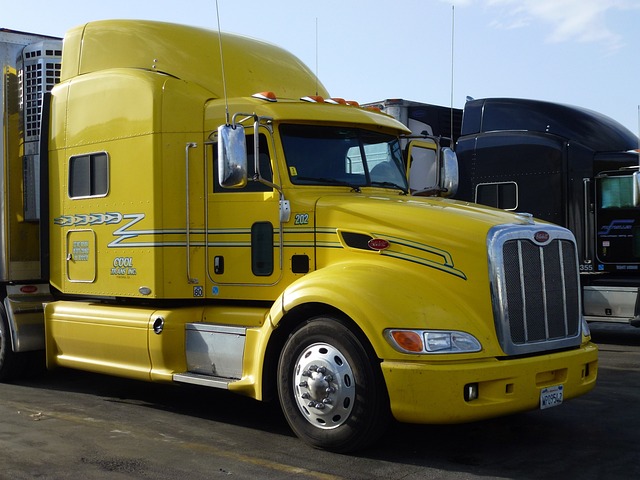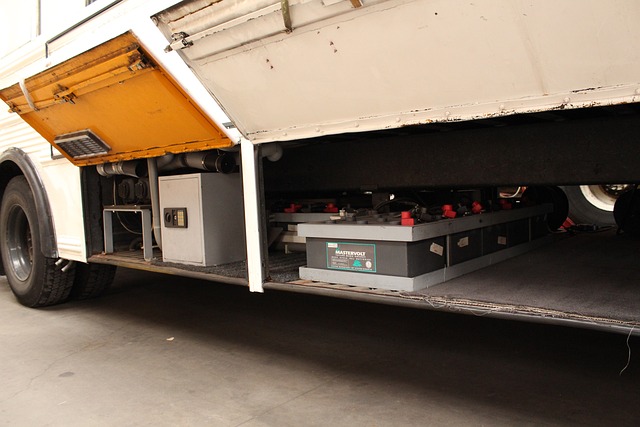In the dynamic transport sector, especially within trucking and its associated cargo liability, effective risk management is vital. This involves a comprehensive analysis of potential hazards across all transportation stages, enabling tailored mitigation strategies. Proactive measures include staff training, vehicle maintenance, and regulatory compliance, while reactive techniques cover emergency systems and cargo securing. Leveraging technology for real-time monitoring enhances safety, minimizes losses from liability claims, and cultivates a culture focused on secure trucking operations.
In the dynamic landscape of transportation, understanding and mitigating risks is paramount. This article offers professional insights into crucial aspects of risk management, focusing on essential elements like trucking cargo liability. We explore fundamental concepts, from grasping the basics of trucking cargo liability to implementing robust risk assessment strategies. Additionally, we delve into effective mitigation measures and best practices for continuous risk management, empowering professionals to enhance safety and reduce liability in transport operations.
Understanding Trucking Cargo Liability: The Basics

In the intricate world of trucking, understanding trucking cargo liability is paramount for professionals aiming to mitigate risks during transport operations. This concept refers to the legal responsibility borne by carriers and shipping companies for the safe delivery of goods. It encompasses a web of regulations, insurance policies, and best practices designed to protect all parties involved—from shippers to receivers. By grasping the fundamentals of trucking cargo liability, operators can make informed decisions, ensuring compliance and minimizing potential losses.
At its core, trucking cargo liability involves several key elements. Carriers are typically held accountable for damage or loss occurring during transit, from the point of pickup to delivery. This includes physical harm to the cargo, as well as financial losses incurred by shippers due to delays or non-delivery. Insurance policies play a crucial role in protecting against these risks, with various coverages catering to different scenarios—from accidental damage to theft and natural disasters. Effective risk mitigation strategies for trucking operations involve meticulous documentation, secure loading practices, and adherence to safety protocols, thereby fostering a culture of responsibility and redundancy within the industry.
Risk Assessment Strategies for Transport Operations

In the dynamic landscape of transport operations, especially within the trucking industry and its associated cargo liability, effective risk assessment is paramount. Professional insights recommend a multi-faceted approach, beginning with a comprehensive analysis of potential hazards. This involves scrutinizing every stage of the transportation process—from loading to unloading, routing, and environmental conditions—to identify points where risks could arise. By understanding these risks, transport operations can implement tailored mitigation strategies.
Risk assessment strategies should encompass both proactive and reactive measures. Proactive measures focus on preventing incidents through stringent safety protocols, regular vehicle maintenance, and driver training. Reactive measures, on the other hand, involve having contingency plans in place for handling unexpected events, such as emergency braking systems, proper cargo securing techniques, and real-time tracking to enable swift responses during critical situations. These strategies collectively contribute to enhancing safety, minimizing losses, and ensuring smooth trucking operations while managing cargo liability effectively.
Mitigation Measures to Enhance Safety and Reduce Liability

In the dynamic landscape of transport operations, enhancing safety and reducing trucking cargo liability are paramount to ensuring smooth and secure journeys. Effective mitigation measures begin with comprehensive risk assessments that identify potential hazards along routes. By analyzing historical data, understanding local conditions, and considering weather patterns, carriers can proactively address risks before they escalate. Regular fleet maintenance plays a crucial role in this regard, as well-maintained vehicles are less prone to breakdowns or mechanical failures that could disrupt schedules and increase liability.
Advanced technologies offer another layer of protection. Implementing real-time tracking systems allows for continuous monitoring of cargo and drivers, enabling swift responses to deviations from planned routes or suspicious activities. Telematics and driver behavior monitoring can help identify fatigue, inattentiveness, or unsafe driving practices, prompting interventions to ensure everyone’s safety. Furthermore, employing robust security protocols for loading and unloading, including secure facilities and surveillance, significantly reduces the risk of cargo theft or damage, thereby lowering both financial losses and legal liabilities.
Best Practices for Continuous Risk Management in Transportation

In the dynamic landscape of transportation operations, continuous risk management is paramount to ensuring smooth and safe logistics. Best practices for managing risks in trucking and cargo liability involve a multi-faceted approach. Firstly, adopting a proactive mindset is essential; anticipating potential hazards and implementing strategies to mitigate them before they occur significantly reduces incidents. Regular safety training for personnel, staying updated with industry regulations, and conducting thorough vehicle maintenance checks are fundamental steps.
Additionally, leveraging technology plays a pivotal role in enhancing risk management. Utilizing advanced tracking systems and data analytics allows for real-time monitoring of cargo conditions, driver behavior, and potential route risks. This enables quick responses to emerging issues, such as temperature fluctuations or unsafe driving patterns. Implementing these best practices fosters a culture of safety, reduces financial burdens associated with liability claims, and ultimately safeguards the integrity of trucking operations.
Professional insights on mitigating risks during transport operations are invaluable in today’s competitive landscape. By understanding trucking cargo liability, implementing robust risk assessment strategies, and adopting effective mitigation measures, transportation businesses can significantly enhance safety and reduce liabilities. Continuous risk management practices, including regular audits and data-driven decisions, ensure that operations remain efficient and compliant with industry standards. Staying informed and proactive in these areas is key to navigating the complex world of trucking cargo liability and fostering a culture of safe, reliable transport.
